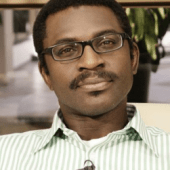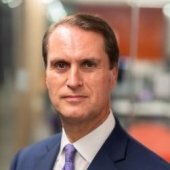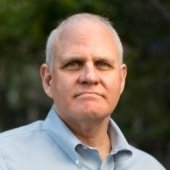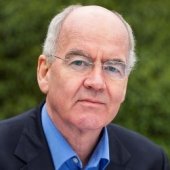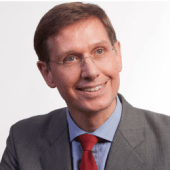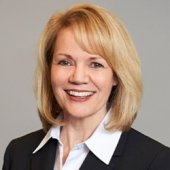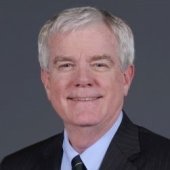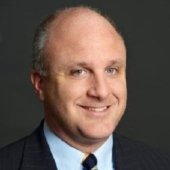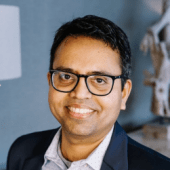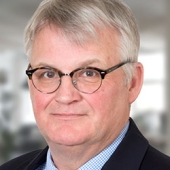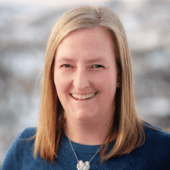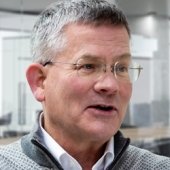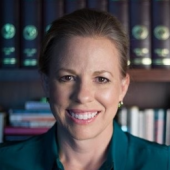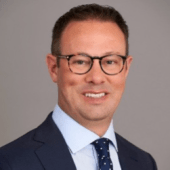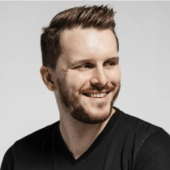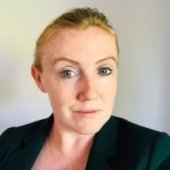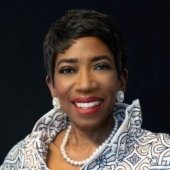IN BRIEF
- 13:00 - We really have to think more broadly about the problem, how you solve not just for each individual company the Scope 1 and Scope 2, but how do you solve for value chains? What’s required to facilitate that flow of data through the value chain so that each value chain has the most effective understanding of their footprint, not just immediately upstream and downstream but all the way through that chain for an individual participant in that chain.
- 17:00 - The real potential is to scale rapidly and scale globally. We as a company are focused on finding new ways that we can use to harness the power of technology with these partnerships and the right investments and the right companies to drive impact at scale.
- 22:15 - We really need more actuals. Actual real-time or near real-time data if we as a planet are probably going to understand where we are from a carbon emission’s perspective and then where each company is and their ownership and responsibility around that.
In this video, David Petrucci, leader of Protiviti’s Supply Chain and Operations practice, sits down with Alex Robart, GM of Sustainability and Industry Solutions at Microsoft, to discuss Microsoft’s ambitious net zero goals and how Microsoft technology, specifically its Cloud for Sustainability, can help companies track, measure and control Scope 1, Scope 2 and Scope 3 emissions to achieve carbon neutrality along their entire value chains. There are formidable challenges on the way but Microsoft is up to them.
Alex Robart is General Manager for Sustainability and Industry Solutions at Microsoft where he leads Microsoft's commercial sustainability solutions strategy across industries and the commercial strategy for Microsoft's energy business since 2020. Prior to Microsoft, as CEO of an AI SaaS company at the leading edge of operations technology digital transformation, Robart scaled the team four times and launched an industry-first, closed-loop optimization data product. Previously, he built and exited multiple data and software companies in energy and industrial sectors.
David Petrucci is a Managing Director with Protiviti and leader of the Supply Chain and Operations practice in Charlotte, NC. He has more than 30 years of operational improvement and innovation experience working across industry, technology and consulting organizations. His specialty is developing new business and organizational models at the intersection of business and technology. David started his career in product development and manufacturing, working in the auto industry for Delphi, Valeo, Tenneco and Honda.
Video transcript
Joe Kornik: Welcome to the VISION by Protiviti interview. I’m Joe Kornik, Director of Brand Publishing and Editor-in-Chief of VISION by Protiviti, a global content initiative looking into the future to examine big themes that will impact the C-suite in executive boardrooms worldwide. Today we’re exploring the future of ESG and its strategic implications for people, process and the planet. I’m thrilled to welcome in Alex Robart, the GM of Sustainability and Industry Solutions at Microsoft, where he leads the firms’ commercial sustainability solution strategy across industries. Alex will be asked about all that and more by Protiviti’s David Petrucci, Managing Director and leader of the supply chain and operations practice. I’m happy to turn it over to David to begin.
David Petrucci: Thanks, Joe. Alex, welcome and thank you for joining us today on such an important topic.
Alex Robart: Thank you. I’m glad to be here.
David Petrucci: We know Microsoft has been leading the way when it comes to sustainability, not just internally but also through your ecosystem. Satya has made some very bold pledges along the way. A hundred percent renewable energy but 2025, protect more land than it uses by 2025. Carbon negative by 2030. Zero waste by 2030. Water positive by 2030. These are all extremely strong stretch pledges for companies today. Then more important than anything is the carbon negative since foundation by 2050. That’s probably one of the most bold pledges of any company around the world. These are some serious pledges from a corporate sense and standpoint. Alex, could you talk about some of the challenges that Microsoft is looking at internally. You’re doubling your data centers every 14 to 18 months but still achieving Satya’s targets. How are you doing this?
Alex Robart: I’ll just start by saying it does feel really good to work with a company who has been so bold and perhaps has set some of the most ambitious and holistic set of goals out there, so it’s exciting. It makes you feel happy to come to work every day and really be part of the solution. I think from a cultural perspective and what allows us to—you made those goals let alone execute on those goals—it really just comes down to leadership to start.
Full credit to Satya and to Brad Smith and to Lucas Joppa, our Chief Environmental Officer, who have been real thought leaders in constructing the goals and finding the fortitude and commitment that we, Microsoft, as one of the leading companies globally, with strong balance sheet, great performance, growth, all the things that you like to see, we have the ability to do more quickly than most companies with our 2030 carbon negative goal. We do believe that we should do that. Those are some of the big philosophical thinking behind those goals.
In terms of, what does it look like internally to actually make the progress to execute against those things, because the good and the bad of that to your targets are somewhere at 2050 with the timeline perspective which is pretty far off. You and I probably won’t be working with companies still in 2050. The way it’s not really your problem to set a 2050 target. Our 2025 internal target around running our operations exclusive on global energy and our series of 2030 targets that you laid out there, they’re very near-term targets where current leadership team and current company, people and place has to own it, execute and deliver these things. We’re really on the hook. We set that first goal of ours, our carbon goal, in 2009. It’s been a pretty lengthy journey here since 2009, over a dozen years of work. We’ve continued to deliver and then reflect, upgrade, and set new goals for ourselves. Sometimes it feels like we can’t stop setting more ambitious targets for ourselves.
We really started from an operational-only focus. We looked at how to make our offices and our data centers more efficient, more sustainable, with work that spans the company, now to really evolve to the broad holistic focus: all of our products, all of our services, all of our customers, partners, policy and of course our employees. It’s been an evolution to get to, I think, that really holistic end-to-end point that not only looks within our four walls of the enterprise as Microsoft but really considers broadly us as a global participant who can and should have more impact beyond just our own emissions footprint. I think that was probably a really big, in a way, revelation for the fact that we can have a broader impact on our ecosystem as well as on the world globally.
I think the recent compulsory climate disclosure, the SEC’s recently proposed rules, the UK, Europe, Japan and elsewhere, all of these are really crucial to put in all various countries on track to get to net zero, to a net zero future. We’ve really decided to lean in as heavily as we can from a policy perspective, use that footprint, use that maturity when it comes to engaging with policy makers in governments to provide them increased information to investors and to other companies how to facilitate the emergence of a framework for measuring carbon negative impacts in order to share meaningful insights to help our companies and our customers develop emissions reduction strategies.
Following off of that policy framework, we really did move our focus beyond getting our house in order with our footprints and then helping create new industries leaning from a policy and an investment perspective, to now shifting gears to ramping up a new effort which is how to empower our customers to deliver on sustainability and accelerate their own journeys and so to that end, we’re proud to announce last week that we did go general mobility the full commercial launch of our new Microsoft Cloud for Sustainability product, which delivered a lot of the key capabilities from a platform and an application perspective to help our customers accelerate their sustainability journeys and make sure that they’re in compliance with those rules coming country to country.
David Petrucci: Actually, you have so many good nuggets there. Let me dig into a couple of things. You talked about leadership around sustainability and a bit of a culture at Microsoft and you were talking about some of the top-down influence there but could you talk maybe a little bit about the bottoms-up position from of a Microsoft culture standpoint and really what drives that aggressive position and execution? What makes culture so special at Microsoft?
Alex Robart: I think again, not to belabor leadership, but I think Satya has really pushed the concept of empathy and this growth mindset of the company. Since we’ve started setting those sustainability goals back in 2009 and iterated on them and upgraded them, I think it’s really become pretty well-ingrained at this point in the company that all teams have some level of ownership over this and we encourage them to take our strat projects to help drive sustainability into whatever the mandate of their team might be, whether that be products for our customers or whether its internal operations.
I think at this point, it’s really a pretty thriving internal community of folks who lean in beyond whatever their day-to-day roles might be and it’s become an important part of lots of folks’ jobs. We do have a carbon fee that we implemented 2012, I believe was the first year we implemented the carbon fee. We steadily learned from that, iterated on it and improved how it works so that each of the business groups across Microsoft have some accountability for their share of our footprints and have some level of ownership and ultimately driving into executive remuneration to ensure that they’re incentivized to make sure that we deliver on those goals. I think all these different things work together. Again, I think leadership with people and the empathy and growth mindset, embracing some of these concepts is at the core. I’m just pleased to see that we’ve gotten the entire organization engaged on such an important topic.
David Petrucci: Microsoft makes it sound so easy but we know it’s not. There are a lot of comments coming out of COP26 this year that we’re all not doing enough. That these great targets and pledges that we’re making, still aren’t being realized, and I think everyone is seeing and learning that this is tough, this is not easy to make this change. It takes time, it takes a lot of energy, it takes a lot of investment. Talk to us a little bit about what you think needs to change, drive the realization of this change?
Alex Robart: Just to emphasize your point earlier. These things are not easy. Often when I visit with customers, I have to explain to them “Yes, we’ve got these wonderful holistic goals but our road has not been straight up into the right. There’s been plenty of bumps along the way, plenty of lessons learned and best practices that we’ve had to arrive at through some bumps along the road, and I think most recently our recent sustainability report we published in early March, the headline figures in that sustainability report, those outcomes, your great Scope 1 and Scope 2 outcomes, 17% reduction in Scope 1 and Scope 2 footprints above plan, but on Scope 3 we had a miss. Actually, a 23% increase in our Scope 3 footprints, a lot of which is unexpected when we set those goals a couple of years ago. And so we really view this as sort of a learning year for—we’ve got a pretty good handle on our Scope 1 and Scope 2 and we’re executing pretty well on the datacenter, renewable energy goals, which is really at the core of a lot of those energy carbon goals. But there are things that are outside of our four walls. Products in the hands of our customers for instance. Our gaming demand is up. Gaming usage is up, which meant that a lot of these gaming systems, particularly older systems, are running on less decarbonized grids all around the world, which makes it really tough for us to control energy consumption and the carbon footprint associated.
We’ve lessons learned between that and particularly on the part that you raised about this big data center build out. We haven’t figured out ways yet tomorrow and today to really zero out the carbon footprint associated with those construction activities and some of the capital equipment that goes into those data centers. We’re working on them for sure but don’t have the perfect mutual solution in front of us today. A lot of lessons learned. I do always try to convey to our customers that this is hard, we’re learning and we’re here to bring those learnings to you and help you accelerate and bring those best practices to bear.
David Petrucci: I think you brought up some good points around Scope 3 where it becomes much more challenging when you’re looking at that full value chain and you’re trying to move from maybe more of a standard space accounting model to “How do I get the real data? How do I get the real view of what’s going on?”—a cross sample value chain model. We know the sustainability cloud has been GA. Are there other things that Microsoft’s looking at that will help the collaboration, visibility and the continuity of information exchange across that broad spectrum?
Alex Robart: Yes, that’s a good question. When we set down and first started thinking about the product strategy for what became the Cloud for Sustainability, we really started with the framing that this is a value chain problem. We really have to think more broadly about the problem, how you solve not just for each individual company, the Scope 1 and Scope 2, how do you solve for value chains? What’s required to facilitate that flow of data through the value chain so that each value chain has the most effective understanding of their value chain footprint, not just immediately upstream and downstream but all the way through that chain for an individual participant in that chain.
That thought process really anchored our strategic thinking here along with the product that’s Cloud for Sustainability with the application called Microsoft Sustainability Manager designed to help companies with their sustainability data, accounting reporting and that workflow. We also are viewing this platform in the Cloud for Sustainability in the application as a tool to help facilitate that flow of data. Sure, we’ve got high-quality, high-integrity data that we can eventually help companies move back and forth recognizing that we really need a holistic solution if we’re going to solve Scope 3 effectively. It’s really not many companies globally who I think are in a strong position to be able to do this with the trust and credibility of so many large and important companies. We are trusted to help facilitate that data across, not just their upstream supply chain participants but also their downstream customers. That’s where we’re going, it is not just “Let’s deliver a nice application to support the accounting reporting workflow” but how can we help the integrity of data all the way through the value chain.
On top of our commercial efforts, we also help to support and stand up a non-profit—through an effort we call the “carbon call.” We stood this non-profit. We launched it back in February with participation from I think 15 to 20 big corporates and all the big four accountancies with a three-fold mission. Number one is “Let’s encourage our companies to provide higher quality reporting and more reporting on our carbon.” Two is “Let’s work with everyone, particularly the accountancies, to standardize the accounting methodologies” and three, “Let’s work together with all the various vendors in the big integrator implementation players in the space to ensure that the many, many applications popping up there between large companies and startups are all interoperable over time so that data can move back and forth in and out of systems,” because it does no good to anyone if all this data is locked away in a bunch of proprietary systems, proprietary data models and proprietary non-harmonized methodologies.
David Petrucci: So, Alex, I think we have made great progress in sustainability from a leadership standpoint around the world; it’s more than just checking the box, right? We’re seeing the real reasons why companies and leadership teams continue to move toward a sustainability framework. The things that we run into in today’s world where we have inflation, we have economic downturns, we have all of these reasons for leaders to maybe put this on the back burner. What would be your call to action for senior leaders, the futures of business seeing some the times that we’re seeing right now?
Alex Robart: That’s a good question. At Microsoft, you know that our actions alone won’t be enough to protect ecosystems, deliver the climate impact that we all need, achieve all the things across all dimensions of our planet that the scientific consensus is clear on. We’re really testing a new partnership, new solutions, new policy. The real potential is to scale rapidly and scale globally.
We as a company are focused on finding new ways that we can use to harness the power of technology with these partnerships and the right investments and the right companies to drive impact at scale and at a pace to help the world really effectively deliver and transform one and all the climate goals that you don’t think of but also from a circular economy kind more broadly. We’re looking to play a role to catalyze a collective action transitioning to a more climate-friendly set of global products, services and operations, also transition to a global circular economy that brings ecosystems together, align partners and really to put together transformational partnerships that can deliver research, guidance, implementation roadmaps that enable all these goals. We’re looking to leverage the Microsoft Sustainability Manager application to help all our customers out there support automated and comprehensive views of [Audio Gap] impact across their operations and their value chains. That’s an important tool for us that we’re going to be really betting heavily on and using that to work with our customers, not just on that application proper but as certainly the building block for how we engage them across their enterprise, across the different parts of their operations and beyond their four walls to help them bring technology and capabilities from all across Microsoft, to accelerate their efforts across all those different slivers of their operations.
David Petrucci: I know you’ve had so many great use cases with your customer set: steel companies, energy companies where you’re driving consumption out of their business from an energy or CO2 standpoint. I think there’s been so much work to be done on a reduced standpoint. What are you seeing from a replace standpoint as far as your customers go? Is that starting yet? Is that something in the future? Where do you see the next steps?
Alex Robart: I think we’re early there still but there’s some success stories out there. We helped Rio Tinto a couple of years ago to solve all the really tricky underlying data challenges for them to launch a green aluminum product which is green by virtue of the fact that the power that goes into the smelting operation and production facility is all renewable, zero-carbon energy. That’s one example of replace. We’re starting to see a lot more examples cropping up. Not that many have started to achieve full commercial scale but particularly on the back of CBAM in Europe, the Carbon Border Adjustment Mechanism, with Asian manufacturers for instance, we’re hearing a lot more recognition and awareness that, wow this CBAM thing is likely coming in 2026.
One, I’m going to have to attest to the carbon footprint of my products so that they can avoid maximum tariffs. Then next step is what I need to do to reduce those tariffs by reducing the footprint of my product, changing out, redesigning those products, using more renewables to power the operations that produce those products, going to my supply chain. We really are starting to see I think a lot of action on that replace topic with I think things like CBAM playing probably an outsized role in triggering companies to become more aware. So that’s what I’m really quite bullish on, personally, and I think it’s such a tricky data problem. This problem, and really sustainability more broadly, is really in a way the ultimate data problem and in a way there’s no better company than Microsoft to help them solve some of those data issues.
David Petrucci: So Alex, in closing, are there any final thoughts or predictions about where we’ll be, where Microsoft will be, where the world will be as far as sustainability in the next decade? What surprises do you see?
Alex Robart: Yes, I think it’s a fast-moving space with so much innovation so I’m just so excited about the amount of capital funding this space and the amount of awareness from companies but one interesting area, the volume and variety of spatial data, really has continued to grow exponentially. Whether it’s coming from satellites with—we won’t go into details here—but a massive inventory of nanosatellites and satellites of all form and function, acquiring more data about the planet as well as IoT continue to penetrate, requiring more data from ground censors. The volume of data that that’s generating and the amount of compute required to manage and process all that data is really an interesting topic, certainly an interesting topic from the perspective of a cloud company like Microsoft.
I also get interested from a planetary and climate impact perspective. We really need more actuals. Actual real-time or near real-time data if we as a planet are probably going to understand where we are from a carbon emission’s perspective and then where each company is and their ownership and responsibility around that. At the same time from a commercial perspective, if companies are able to get to actuals rather than using emissions factors, to be able to calculate their footprint, we’re not going to be able to get credit for all the good work that a lot of companies are doing and then be able to push that credit through in the form of lower footprint products that in many cases they may be able to actually capture market share, capture margin on the back of the lower footprint that those products represent.
I think it’s imperative for all of us to get to actuals, more real-time data to support that, to attest to that and certify and track those products through value chains so that companies are going to be able to ultimately get to end consumers with products that are low footprint that will be a premium for them in many cases, but to me it’s one of the most exciting things out here is just emergence of sustainability-differentiated products as a massive growth driver for companies. It all takes data, lots of compute, and it really takes moving that data to the infrastructure, I think that is the cloud if we’re really going to fully capitalize on the promise of all that data, particularly the massive volumes of satellite data starting to flow.
David Petrucci: Yes, and I’ve been, only companies, large hyperscale like Microsoft have the ability to bring us all together. Alex, thank you so much for your time today. Your insights on this topic and it’s just great seeing you again. Thanks for everything that you’ve done and Joe, back to you.
Joe Kornik: Thanks David and thank you Alex for that look at sustainability in Microsoft and thank you for watching the VISION by Protiviti interview. On behalf of David and Alex, I’m Joe Kornik. We’ll see you next time.
Did you enjoy this content? For more like this, subscribe to the VISION by Protiviti newsletter.



